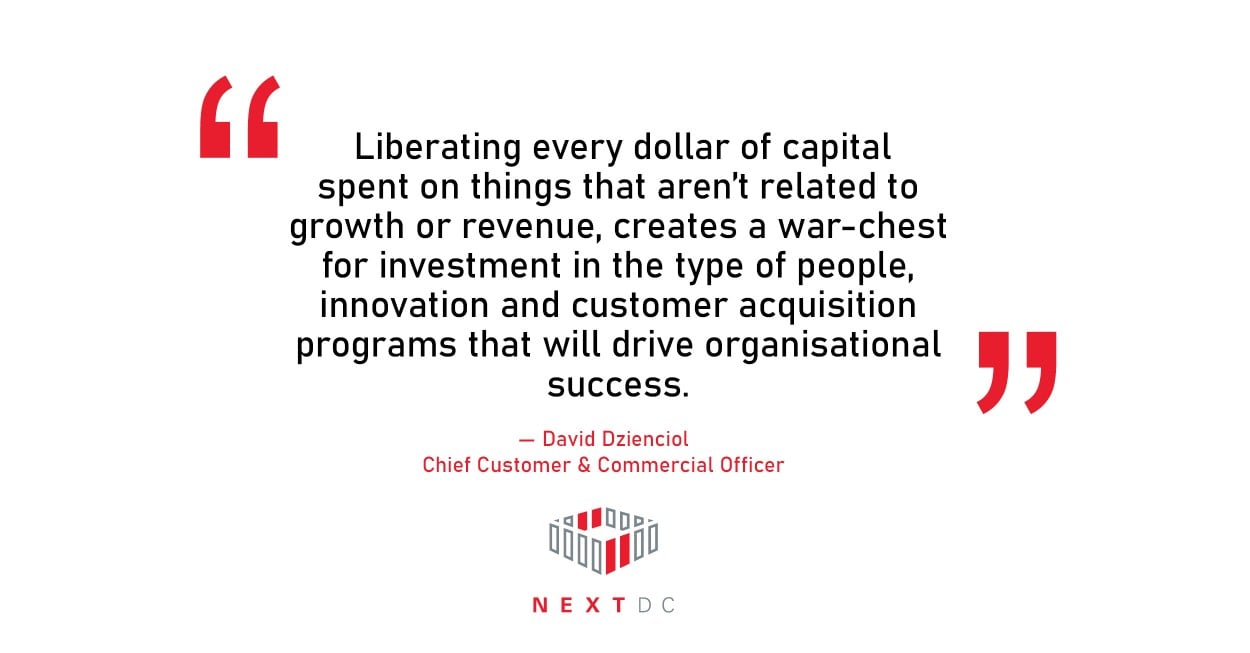By David Dzienciol, Chief Customer & Commercial Officer
For technology leaders, finding the right IT solutions and operating models to accelerate cloud migration strategies can be complex. When you add data growth and management, the ever-present threat of cyber-security risks, and the pressing need to prevent service interruptions – arriving at a cloud architecture that drives maximum ROI isn’t getting any easier.
It is, however, becoming more critical to get it right under pressure from a range of internal and external disruptions. In addition to countering new global, agile competitors, there is urgency to drive innovation that advances productivity, cost savings and customer value objectives, not to mention shortening the time to market for these new initiatives.
In addition to these defined requirements, there’s the expectation that the I.T strategy will also be capable of managing unknown risks. One of the key outcomes from successful cloud migration is the heightened capability and flexibility to address and navigate disruption, irrespective of whether it’s self-administered or climatic.
Growth, reinvention, and speed is dependent on being able to make informed decisions based on data. Lending itself to the need for rigorous attention to data quality, data integrity, and how it’s processed, used, and accessed. Ensuring optimal visibility of data - whether it’s idle or in flight – and the infrastructure to ensure it’s managed, secured and always available is a fundamental requirement for prosperity in a data economy.
The elastic enterprise
Building a culture of innovation and embedding agility at the core is dependent on technology platforms that are agnostic, and scalable where all the disparate clouds, locations, people, and partners are intimately interconnected with the elasticity needed to counter and respond to evolving circumstances.
This is precisely why data centres are the heartbeat of organisations, which prompts the decisions around whether to manage something that isn’t core to your business yourself; or whether a colocation model is best suited, where the complexity of managing and capitalising critical core infrastructure is removed entirely.
Technical solutions vs technical decisions
Increasingly, my conversations with many of our customers around how they manage their data centres, is shifting from being primarily technical decisions. Ultimately, they just want to focus on their business priorities and achieving outcomes that improve their defined success metrics. So, whilst these are technical solutions, this shift in thinking shouldn’t involve technical decision-making.
One of the keys to this is not being locked into narrow technology paths where your options are limited. With business capital and resources needing to be laser focussed on growth, customer value and retention, and innovation, it no longer makes sense being buried in the complexities of managing physical data centre environments.

Achieving operational agility
Multi-Cloud is an important part of any cloud optimisation strategy. Multi-Cloud environments have a significant impact on operational agility, creating its own opportunity upside. Certainly, your interconnection strategy around how you integrate and interoperate the clouds, IT services and other locations that form your Hybrid IT environment, forms critical thinking of its own.
Establishing a unified and interconnected Hybrid/Multi-Cloud environment limits the distance data needs to travel. This drives exponential improvement of application performance by near-eradication of latency and jitter of data transmissions between legacy and virtual machines.
Finding the shortest routes
Proximity to your clouds and digital services is the underlying success factor needed to drive productivity gains and customer experience enhancements.
Hybrid and dispersed computing make up most modern IT environments, however, it’s critical to ensure those physical and virtual environments are all within arm’s length of each other.
As organisations look to emulate the same levels of elasticity and agility in their business operations, as they derive from their digital infrastructure, they’ll continue to lean further into Hybrid- and Multi-Cloud architectures. The biggest decisions are not “if” but “when” is the best time to re-think your infrastructure strategy. But importantly, understanding how to make the right decision in choosing a solution best suited to your needs.
The only way that organisations of the future will thrive will be through making data-driven decisions that create revenue opportunity, increase the competitive divide, and empower rapid response to change.
Cloud migration strategies have always presented several challenges, which isn’t likely to get easier as the journey matures and evolves. The greatest success however, stems from organisations that partner strategically to plan and deploy cloud architecture that gives them options to deal with evolving priorities. A partner that provides the tools that enable greater operational efficiencies and empower informed, data-driven decision-making.
Agility and elasticity are essential to reduce complexity and risk that can otherwise accompany digital transformation. Reach out to us to better understand how to futureproof your cloud migration strategy.
For technology leaders, finding the right IT solutions and operating models to accelerate cloud migration strategies can be complex.


